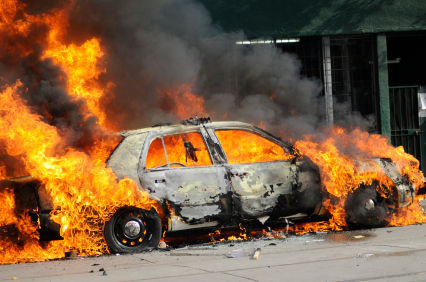Property Damage Coverage
What is property damage, what property damage coverage does, it’s limits, and differences from full coverage.
Property damage is a fact of life. It’s one of the main reasons insurance exists. But property damage from an insurance company’s point of view might be different than how you understand it.
Insurers are interested in paying back policyholders back for property damage. It’s also called “indemnification”.
Indemnification is the replacement of items lost in a claim in such a manner that the insured neither gains nor loses in the process. Indemnification can come in the form of repairs, a payment equal to the value of the lost item at the time of the claim, or in some cases an actual replacement of the item.
In auto insurance, property damage coverage is inextricably linked to indemnification. As part of auto liability coverage, property damage shouldn’t be confused with full coverage collision and comprehensive insurance coverage. While these coverages ultimately do much the same thing, they are different and apply in different scenarios.
What Property Damage Coverage Does
Property damage auto insurance coverage covers you in an accident if you’re found at fault. In essence, it’s the coverage that fixes the other guy’s car (unless you’re in a no fault state, in which case it helps fix your car).
Property damage coverage can also apply to other tangible assets that could be damaged or destroyed in an auto accident, such as trailers, buildings, road signs or other items.
Yes, if you take out a speed limit sign in an accident, the government entity which owns it could bill you for it.
Property Damage Limits
In a traditional split limit liability insurance setup, property damage is represented by the third number. For example, if you carry a typical state minimum of 25/50/15 on your auto liability insurance, that means you have a maximum of $15,000 in property damage coverage for any single claim.
Given that most new cars are valued well in excess of $15,000 these days, it’s not hard to see how that can pose a problem in anything other than a minor accident. Many insurance professionals recommend carrying property damage coverage of at least $50,000.
If you are able to purchase an umbrella policy via your homeowner’s policy or other means, this can often apply to your auto insurance coverage as well. Umbrella policies provide liability coverage over and above the underlying policy limits.
If you have a $1 million umbrella with your auto insurance, in essence add $1 million to your policy liability limits. Although umbrella policies are relatively inexpensive, often times they need to be applied to underlying policies written by the same company. In addition, these policies need to carry certain underlying limits to qualify. Consult with your agent for more information.
Differences from Full Coverage
In a traditional tort auto insurance state, property damage coverage by definition doesn’t fix your car. Instead it provides for repairs to the other party’s vehicle. Full coverage protection fixes yours. Property damage coverage can help to fix your car in a no fault state, but if you’re found at fault in an accident you may be subject to a premium upcharge at renewal.
Also unlike full coverage, property damage coverage never carries a deductible. The insurance company pays for repairs up to the stated limit amount.
Trackback from your site.

